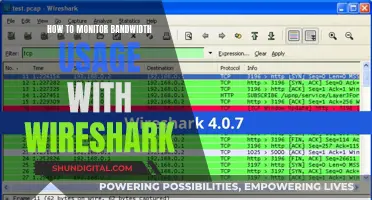
Diffusion tubes are a cheap and easy way to measure nitrogen dioxide in the air. They are small plastic tubes with a cap at each end, one of which is coloured. The tube is attached vertically to a stationary object with the coloured cap at the top, and the bottom cap removed so air can enter the tube. The bottom cap is then left off for 2-4 weeks, after which it is replaced and the tube is sent to a laboratory for analysis. They are widely used by local authorities, councils, and community groups for monitoring air quality.
Diffusion tubes can be purchased from Ormantine USA, Ltd. Inc. and Gastec Corporation.
| Characteristics | Values |
|---|---|
| What they are used for | Monitoring average air pollution levels over a period ranging from days to about a month |
| Who uses them | Local authorities, citizen science projects, schools, mines, museums |
| How they work | Gas enters the tube and is absorbed by a chemical reagent |
| How long they are used for | 2-4 weeks |
| Size | 70mm long |
| Material | Acrylic or polypropylene plastic |
| Shape | Hollow tube with a cap at each end |
| Cost | Reasonably priced |
| Ease of use | Easy to use |
| Power source | Passive (no power source) |
| Analysis | Sent to a laboratory for analysis |
What You'll Learn

How diffusion tubes work
Diffusion tubes are a cheap and easy way to measure nitrogen dioxide in the air. They are small plastic tubes with a cap at each end, roughly 70mm long. One of the caps, usually white, is either removed to activate the tube or contains a filter that allows only the gas being studied to enter. The other cap, a different colour, contains metal mesh discs coated with a chemical reagent that absorbs the gas as it enters the tube. The chemical reagent varies depending on the gas being studied. For example, nitrogen dioxide tubes use triethanolamine (TEA) as the absorbing chemical.
During operation, the tube is opened and fastened vertically to a stationary object such as a lamppost or road sign, with the open end facing down and the closed, coloured cap at the top. The gas being monitored diffuses into the bottom of the tube and is absorbed by the chemical cap. After a period of time, typically two weeks to a month, the tube is sealed and sent to a laboratory for analysis. The concentration of the gas is then calculated using the amount captured and Fick's laws of diffusion.
Diffusion tubes are reasonably accurate, cheap, easy to use, compact, passive, and have a long shelf life. They are widely used by local authorities, community groups, schools, and in indoor environments such as mines and museums. They are particularly useful for monitoring average air pollution levels over longer periods of time and comparing pollution levels in different places or at different times.
However, they do have some disadvantages. Diffusion tubes are not suitable for detecting shorter-term fluctuations in pollutant levels, as they are designed to be left in place for days or weeks. They are also less accurate than the highly sensitive, automated monitoring equipment used in roadside pollution monitoring cabins. Sources of inaccuracy include air turbulence, pollution from building ventilation systems, ultraviolet light, and other pollutants.
Mounting an LCD Monitor: A Step-by-Step Guide
You may want to see also

Where to buy them
Diffusion tubes are widely available from a range of suppliers and laboratories. They are commonly used by local authorities, schools, and community groups, as well as individuals.
In the UK, Ormantine USA Ltd. offers a range of diffusion tubes for monitoring nitrogen oxides, including nitric oxide, nitrogen dioxide, and total NOx. Their tubes are available for purchase online or by phone/email, and they also provide a rapid air monitor for those seeking faster results or shorter monitoring periods. Their tubes are analysed in UKAS-accredited laboratories, with results available within 10 working days.
In the US, Gastec Corporation, based in Kanagawa, Japan, manufactures diffusion tubes for monitoring various gases, including carbon monoxide, hydrogen sulphide, nitrogen dioxide, sulphur dioxide, and benzene. These tubes are referenced in a study by the University of North Carolina, suggesting they may be a common choice for pollution monitoring in the US.
Other suppliers of diffusion tubes include Air Particle Counters, Environmental Monitoring, and Peristaltic Tubing Division, who offer tubes for monitoring ammonia, formaldehyde, hydrogen sulphide, ozone, and VOCs, among others.
It is also worth noting that some local councils and communities may be involved in positioning and changing diffusion tubes, providing access to air pollution measurements for local residents.
Monitor Bugs: ASUS Warranty Coverage Explained
You may want to see also

How to set them up
Diffusion tubes are a cheap and easy way to measure nitrogen dioxide in the air. They are small plastic tubes with a cap at each end, one of which is coloured. The tube is attached vertically to a stationary object such as a lamppost, with the coloured cap at the top. The bottom cap is then removed so that air can enter the tube.
The top of the tube contains a steel mesh disc coated with triethanolamine (TEA), a chemical that absorbs nitrogen dioxide. When the gases pass over the mesh, the chemical changes, indicating how much nitrogen dioxide was in the air during the monitoring period.
The tube must be left in place for 2-4 weeks, after which the bottom cap is replaced and the tube is sent to a laboratory for analysis. In the lab, the steel mesh is removed, washed with distilled water, and analysed. The concentration of nitrogen dioxide is found by shining ultraviolet light (UV) through the water sample. The amount of light absorbed is equivalent to the concentration of nitrogen dioxide in the air.
Diffusion tubes are widely used by local authorities and community groups for monitoring air quality in urban areas and for citizen science projects. They are also used for indoor environments such as mines and museums.
Monitoring Memory Usage: A Guide for Node.js Developers
You may want to see also

How long they take to work
Diffusion tubes are a cheap and easy way to measure nitrogen dioxide levels in the air. They are supplied and analysed by laboratories. They are often used by councils, residents, and schools to measure air pollution levels across a borough or a local area.
Diffusion tubes are small plastic tubes with a cap at each end, one of which is coloured. The tube is opened and vertically fastened to something like a lamp post or road sign, with the open end facing down, and the closed, coloured cap at the top. The gas being monitored then diffuses into the bottom of the tube and is absorbed by the chemical cap. This process of diffusion continues for a fixed period of time, typically from two to four weeks, after which the tube is sealed and sent to a laboratory for analysis.
Diffusion tubes are reasonably accurate, cheap, easy to use, compact, and passive, requiring no power source. They are also versatile, being able to be deployed almost anywhere, indoors or outdoors. They give a good indication of the long-term, average concentration of a pollutant gas, and they make it easy to compare average pollution levels in different places or at different times.
However, they are not designed to indicate shorter-term fluctuations of the pollutant being studied, such as the difference between weekdays and weekends. They are also much less accurate than the highly sensitive, automated monitoring equipment used in roadside pollution monitoring cabins. Sources of inaccuracy include air turbulence, ultraviolet light, and other pollutants.
Ornate Monitor Growth: Full Size, How Fast?
You may want to see also

How much they cost
Diffusion tubes are a cheap and easy way to measure nitrogen dioxide. They are supplied and analysed by laboratories. Councils use them to get an indication of air pollution levels across their borough by putting tubes in lots of different places. Residents, schools and community groups also use diffusion tubes for citizen science projects to measure their local air quality.
Diffusion tubes are small plastic tubes with a cap at each end, one of which is coloured. The coloured cap contains a steel mesh disc coated with triethanolamine (TEA), a chemical that absorbs nitrogen dioxide. The bottom white cap is removed so that the air can get into the tube. The tube must be left in place with the bottom cap off for 2-4 weeks, after which the bottom cap is replaced and the tube is returned to the laboratory for analysis.
Diffusion tubes are reasonably accurate, relatively cheap, easy to use, compact, passive, and have a long shelf life. They are also versatile and can be used to sample various different gases, including oxides of nitrogen (nitrogen dioxide and nitric oxide), sulphur dioxide, ammonia, and ozone.
Diffusion tubes are commercially available and are about the size and shape of a pencil. They are small, inexpensive and require no electrical power. They are also simple and unobtrusive.
The cost of diffusion tubes varies depending on the specific type, manufacturer, and supplier. Some tubes may be purchased individually, while others are available in packs of multiple tubes. The price per tube can range from a few dollars to several hundred dollars, depending on the specific type and brand. It is important to consider the cost of the analysis as well, as this can vary depending on the laboratory and the complexity of the analysis required.
Headsets and Monitors: The Best Connection for Quality Audio
You may want to see also
Frequently asked questions
Diffusion tubes are small plastic tubes with a cap at each end, one of which is coloured. They are a cheap and easy way to measure nitrogen dioxide.
The bottom white cap is removed so that air can enter the tube. Nitrogen dioxide in the air reacts with the chemical on the mesh at the top of the tube and changes into nitrite. The tube must be left in place with the bottom cap off for 2-4 weeks, after which the bottom cap is replaced and the tube is returned to the laboratory for analysis.
Diffusion tubes are supplied and analysed by laboratories. Councils use them to get an indication of air pollution levels across their borough. You can contact your local council to find out more about where they source their diffusion tubes.
The cost of diffusion tubes varies depending on the type and number of tubes required. Ormantine USA, Ltd. Inc. offers diffusion tubes for monitoring nitrogen oxides, with prices available upon request.
The tubes are attached in a vertical position with the coloured cap at the top to a stationary object such as a lamppost, road sign, railings, or a drainpipe. The bottom white cap is removed so that air can get into the tube. The tube must be left in place for 2-4 weeks, after which the cap is replaced and the tube is sent to a laboratory for analysis.







